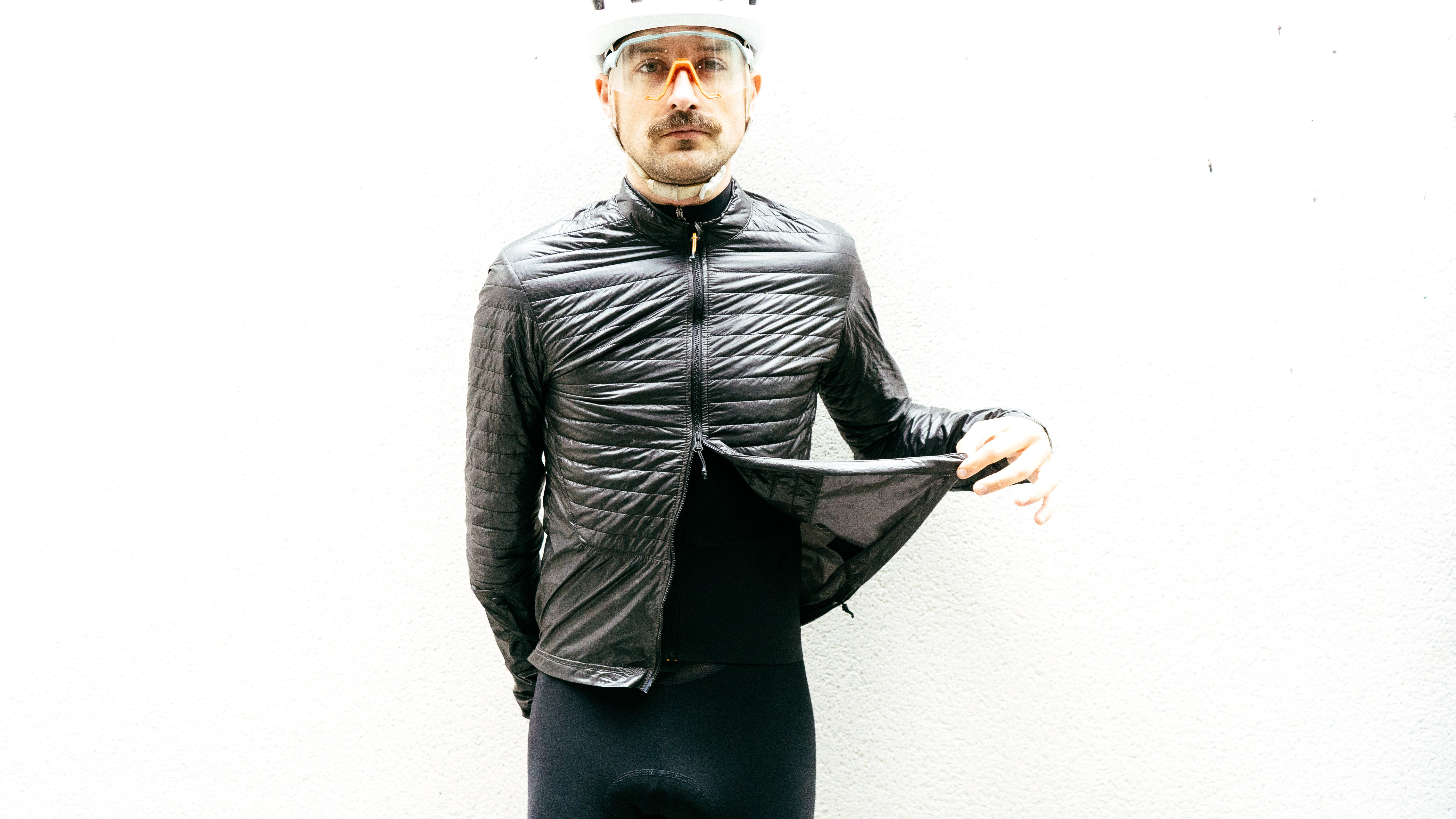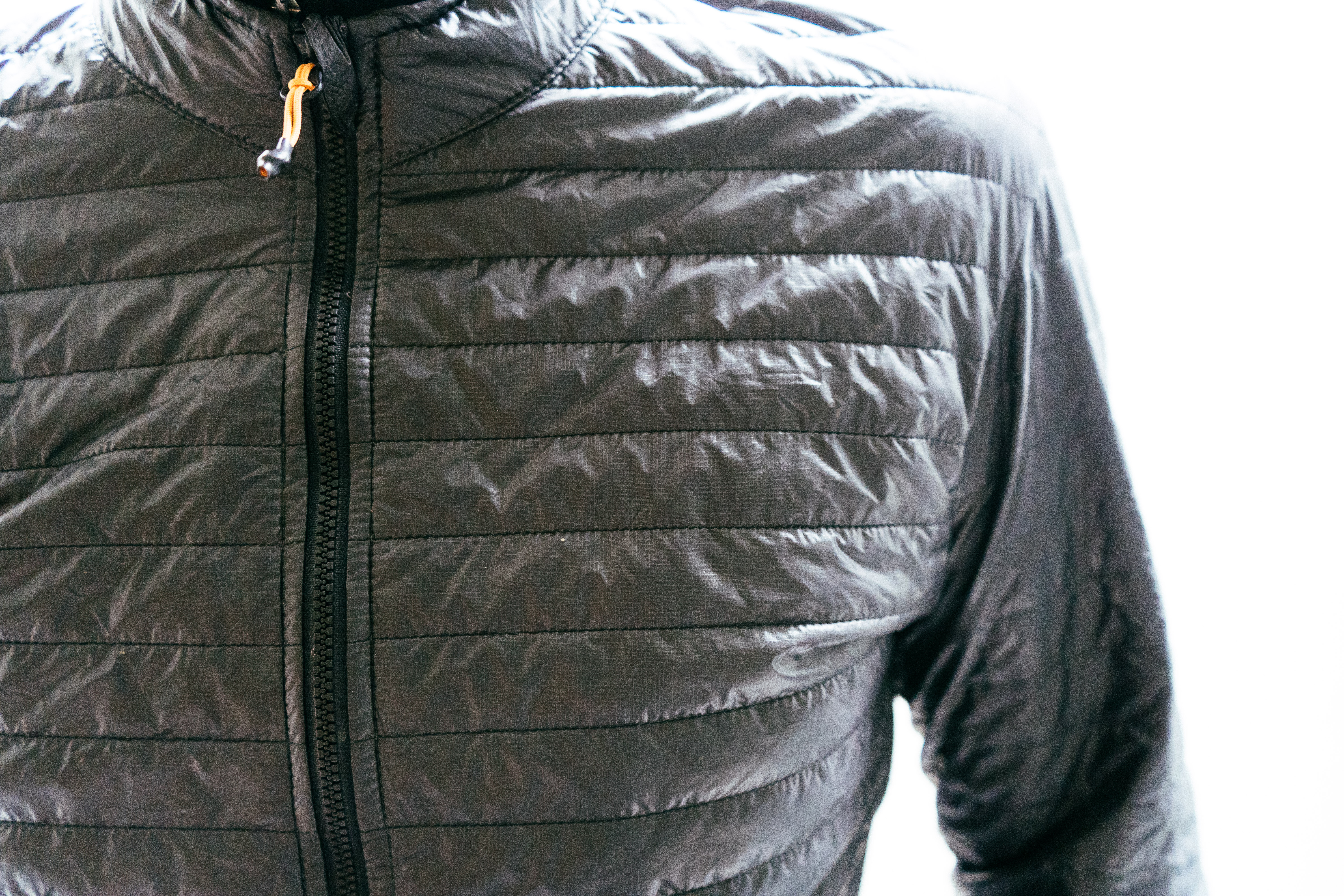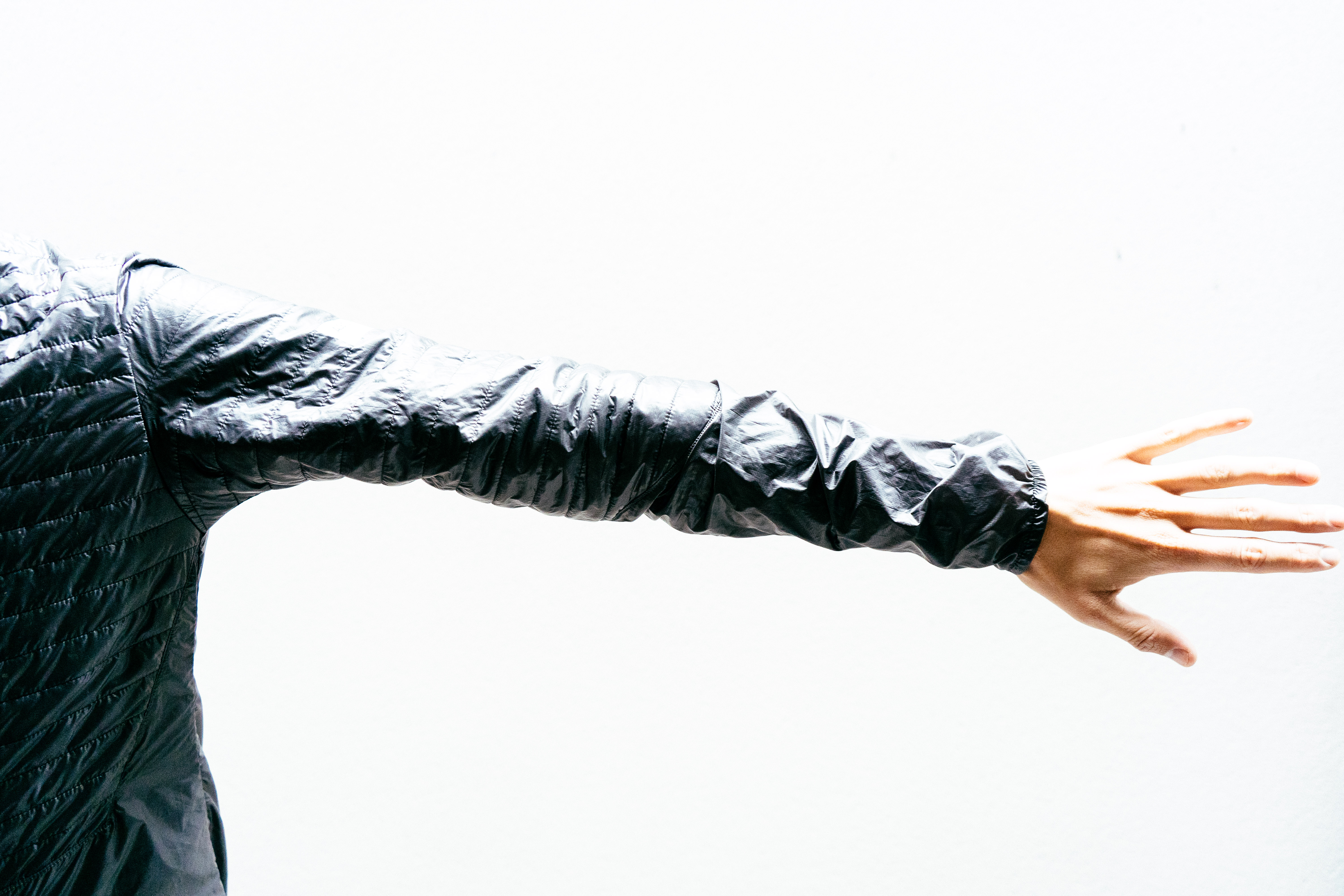
There’s a saying in photography that goes ‘the best camera is the one you have with you’. That doesn’t necessarily ring true the whole time with the best winter cycling jackets, but having a warm layer with you at all times, just in case, is never going to be a bad idea. I’ve been riding with the Albion Ultralight Insulated jacket for the last month or so and it’s taken me a bit of time to get my head around it.
It looks, on paper, like a standard (if very thin) wind jacket, just with some added synthetic insulation, and so I initially consigned it to ‘emergency shell’ territory and simply stuffed it in my pocket and never really used it for the first few rides. I am happy to report that, after actually riding with it a fair bit, it’s far more than that. I’ve used it as an actual part of my riding wardrobe and kept it on all day in some cases.
I’m not going to pretend it’s going to be a dedicated winter jacket for use all winter; it’s not warm enough for that. It is however an extremely useful bit of kit that is more versatile than you might expect. If you’re looking for something with a little more oomph than something from my colleague Tom’s best cycling gilets guide, or maybe you’re bikepacking curious, or just want some peace of mind in the cold then read on.



Design and aesthetics
The design of the jacket is beautifully simple. It is, as I said in the introduction, essentially just a wind jacket with some added insulation in key areas, but even among wind jackets it’d still be a pretty pared back setup. The fabric is incredibly thin ripstop nylon which helps proceedings, but everything is done with the bare minimum of extra material. The cuffs make do with only half elastic, which is pretty common on waterproof jackets like the Rapha Pro Team Gore-Tex, but on a jacket like this, it looks very minimal indeed. Likewise the hem, the front of which is a simple rollover overlocked stitch, while the rear is a thin elastic drawcord.
The zip, fortunately, a double-ended one (a must in my eyes for anything besides jerseys), is also relatively slimline, but it’s not nearly as slim as that used on the POC Supreme jacket, which was a little hard to use. The collar is also pretty low profile, a good cm shorter than the brand’s now discontinued mini full-down jacket. You get no pockets, no stuff sack. You do get some perforation under the armpits though and down the back of the triceps, but as with something like the Maap Atmos from the world of waterproofs, the packability is the feature.
What you do get though is two chest panels of synthetic insulation, a little bit just to cover the tops of your shoulders, the full circumference of your upper arm, and a little bit below the elbow on your forearm. Essentially, just the leading edges, whether you’re in an aero road position or on an XC MTB. It’s very intelligently placed, and the chest panels are even tapered in at the sides to avoid adding any unnecessary bulk.
The insulation is recycled, with a claimed 93% of it coming from single-use plastic bottles. The key feature of the insulation though is the inbuilt perforations. Through all the insulated panels large holes exist in order to enhance breathability, with the aim of staving off that boil-in-the-bag feeling that is so often the downfall of wind jackets.




Performance
Let’s start, unusually, with how good this jacket is when you’re not actually wearing it. It weighs next to nothing (I measure my size medium as 95.9g) and while it doesn’t have a stuff sack you can make a pretty good approximation by taking the forearm, twisting it around a few times to effectively make a barrier, and then stuffing the rest of the jacket into the sleeve. In practice though the easiest thing to do is just stuff it wholesale into a pocket. Don’t bother faffing about with folding or rolling: Just stuff.
One thing that I always carry with me in case of emergencies is the Albion Burner. It just lives in my toolkit, partially as a ‘just in case’ layer, and partially to stop everything inside rattling, but this jacket would fulfil much the same job and only take up a little more space. In reality though it’s easier to put it in a pocket, where it’s quick at hand to deploy should the need arise. Given the material is so smooth it’s very easy to pull on without having to stop if you’re in any way reasonably confident with riding no handed. The zip is a little more fiddy - definitely a no-glove affair - but it’s far from the hardest zip I’ve had to use.



While wearing I was actually pleasantly surprised at how effective it was at keeping me warm. Like I said, it isn’t a jacket for those painfully cold days unless it’s part of a larger layering system, but for riding in gloomy, foggy, damp (but not raining) weather around 10 degrees it’s brilliant. I kept it on more or less for the entirety of a 90km gravel day on Salisbury Plain and my only complaint was that the shoulders are a little flappy, but that’s par for the course for jackets of such lightweight construction as this one. The video embedded below shows where it really thrives.
I am glad Albion decided to add a proper drawstring and double ended zip. Being able to cinch the bottom up when it’s more chilly, and open it up from the bottom when it’s a little warmer, means you can ride in it without having to take it off and on constantly.
Considering it’s ripstop nylon it’s not actually as hot and sweaty as you’d imagine. The big perforations down the back of the arms certainly help, but on long, really hard climbs it can get overwhelmed. If you know you’re heading out on a hard, hilly ride and need a layer for all day plan accordingly, but this is there for those changeable days.
What it’s actually really great for is winter intervals. You can warm up while wearing it, stuff it in your pocket, and then pop it back on at the end so you don’t instantly freeze on the way home/to the pub. While it is undoubtedly an excellent layer for ultralight bikepacking enthusiasts, it’s actually just as useful as a general-purpose winter layer that could replace a gilet in the colder months. Under a waterproof jacket - I tried it out under the Maap Atmos - it is a little sweaty. It works in a pinch. But as a midlayer, it isn’t quite breathable enough to really thrive.
Value
Something I often come up against in assessing the value of clothing is an army of commenters saying ‘how can you charge X for so little fabric?!’. Yes, the value of the raw materials is reduced, but superlight fabrics are more expensive as, sadly, are recycled insulation layers. If it was hardware, say a superlight frame or a set of bars, nobody would bat an eye at a more lightweight item being more expensive.
Anyway, what I’m getting at is that while £175 for a very lightweight, bolstered wind jacket is a lot, it’s actually a very versatile piece of kit that will probably see a lot of use over a wide range of conditions. Could you achieve the same performance with a combination of other layers? Most likely, but it wouldn’t be quite so packable.
It’s not a bargain, mostly because it’s relatively specialised, but I don’t think it’s an unfair price given how much thought and effort has gone into making it so slimline.
Verdict
The Albion Ultralight Insulated Jacket is more than just an emergency shell. Once you work out where it fits into your layering system it becomes a really rather versatile bit of kit, perfect for long, gloomy days where a full-on winter jacket is too much, and a gilet isn’t quite enough. It packs down incredibly small so you can literally take it on every ride just in case without ever feeling encumbered, and it’s just as adept for bikepacking duties where you need as small a setup as possible as it is as something to throw on for the post-ride coffee to stave off the chill.







